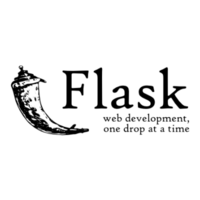What is MongoDB Atlas?
Who uses MongoDB Atlas?
MongoDB Atlas Integrations
Here are some stack decisions, common use cases and reviews by companies and developers who chose MongoDB Atlas in their tech stack.
Hello, I wanna build an e-commerce website for myself and planning to build for others in the future. I really like Node.js, React, ExpressJS. But I don't know if MySQL or MongoDB is what suits me the best because at the moment I have a webhotel at a hosting provider and I like that setup, setting up emails, and having more control I guess over my situation.
But is there any way I can use MongoDB on cPanel or direct admin except using MongoDB Atlas which costs a lot of money?
Because I have a setup using React, Node, Express, and MySQL and it works kind of well when working in the direct admin panel. But I just wanna make sure I make the right decision now when I start building an e-commerce website both to be cost effective and also not have to learn too many things.
I am also open to tips for example choosing Next.js instead etc if that is actually necessary and would help me in the long run.
Hi, I'm trying to build a project where companies display some of their data (mostly unstructured) that I want to store on a cloud database. And users will be able to read this data and interact with it (not much interaction tho). the primary focus on the database will be for easy access for displaying, and the data won't change a lot over a time period. I was wondering if I should 1) use Django as a framework to build on, and/or 2) use either Firebase or MongoDB Atlas as a database. In this, I am more inclined to Firebase because I will need to authenticate users and have past experience with Firebase.
Confused to implement a full-text search feature for a web application. Right now we are storing all the data's in MongoDB Atlas. I know MongoDB Atlas is providing a full-text feature, but it is so limited. Our users should have the ability to search from more than 15 collections. How should I implement this in MongoDB Atlas?. While searching I found Elasticsearch cloud provides a full-text search feature. Should I move our application data from MongoDB Atlas to elastic cloud only for search?.
For our web application's backend, we have decided to create our server using Node.js and npm as our package manager, as this allows us to utilize a developer's skills and knowledge in JS for both the frontend and backend. ExpressJS provides us an easy to learn framework that saves us effort, time and improves productivity in creating our server, while affording us room to add complexity. Passport will be used to implement Oauth2.0 authentication for our web application, allowing our users to sign in with their existing accounts (no one wants to create a remember the password for yet another account). Mongoose will be used to make calls to our backend, this framework will help make these calls more accessible and organized. We have decided to use Redis on our server for any caching we need. This will greatly speed up retrieval times and reduce calls to external sources for any data that could instead be cached on our server. Lastly, we will use Jest as our unit testing framework for our backend as it is very popular and has support for Node.js . Furthermore, this is the same testing framework we will be using for our frontend, thus allowing use quickly learn and implement testing in both frontend and backend.
We have decided to use Heroku as our hosting platform for our server. Heroku provides clear documentation and a quick and simple process to host Node.js applications with their service, along with great support with our version control Git. Furthermore, Heroku also provides a free tier, which allows us to deploy and test our web application from the beginning of development.
MongoDB is our chosen database as a NoSQL database will give us flexibility in storing different types of data and room for scaling our product. We have decided to use MongoDB Atlas to host our database. As they provide a quick and simple start up along with a free tier to host database. Thus, allowing us to rapidly test our server's uses with the database.
Server side
We decided to use Python for our backend because it is one of the industry standard languages for data analysis and machine learning. It also has a lot of support due to its large user base.
Web Server: We chose Flask because we want to keep our machine learning / data analysis and the web server in the same language. Flask is easy to use and we all have experience with it. Postman will be used for creating and testing APIs due to its convenience.
Machine Learning: We decided to go with PyTorch for machine learning since it is one of the most popular libraries. It is also known to have an easier learning curve than other popular libraries such as Tensorflow. This is important because our team lacks ML experience and learning the tool as fast as possible would increase productivity.
Data Analysis: Some common Python libraries will be used to analyze our data. These include NumPy, Pandas , and matplotlib. These tools combined will help us learn the properties and characteristics of our data. Jupyter notebook will be used to help organize the data analysis process, and improve the code readability.
Client side
UI: We decided to use React for the UI because it helps organize the data and variables of the application into components, making it very convenient to maintain our dashboard. Since React is one of the most popular front end frameworks right now, there will be a lot of support for it as well as a lot of potential new hires that are familiar with the framework. CSS 3 and HTML5 will be used for the basic styling and structure of the web app, as they are the most widely used front end languages.
State Management: We decided to use Redux to manage the state of the application since it works naturally to React. Our team also already has experience working with Redux which gave it a slight edge over the other state management libraries.
Data Visualization: We decided to use the React-based library Victory to visualize the data. They have very user friendly documentation on their official website which we find easy to learn from.
Cache
- Caching: We decided between Redis and memcached because they are two of the most popular open-source cache engines. We ultimately decided to use Redis to improve our web app performance mainly due to the extra functionalities it provides such as fine-tuning cache contents and durability.
Database
- Database: We decided to use a NoSQL database over a relational database because of its flexibility from not having a predefined schema. The user behavior analytics has to be flexible since the data we plan to store may change frequently. We decided on MongoDB because it is lightweight and we can easily host the database with MongoDB Atlas . Everyone on our team also has experience working with MongoDB.
Infrastructure
- Deployment: We decided to use Heroku over AWS, Azure, Google Cloud because it is free. Although there are advantages to the other cloud services, Heroku makes the most sense to our team because our primary goal is to build an MVP.
Other Tools
Communication Slack will be used as the primary source of communication. It provides all the features needed for basic discussions. In terms of more interactive meetings, Zoom will be used for its video calls and screen sharing capabilities.
Source Control The project will be stored on GitHub and all code changes will be done though pull requests. This will help us keep the codebase clean and make it easy to revert changes when we need to.
We are in the process of building a modern content platform to deliver our content through various channels. We decided to go with Microservices architecture as we wanted scale. Microservice architecture style is an approach to developing an application as a suite of small independently deployable services built around specific business capabilities. You can gain modularity, extensive parallelism and cost-effective scaling by deploying services across many distributed servers. Microservices modularity facilitates independent updates/deployments, and helps to avoid single point of failure, which can help prevent large-scale outages. We also decided to use Event Driven Architecture pattern which is a popular distributed asynchronous architecture pattern used to produce highly scalable applications. The event-driven architecture is made up of highly decoupled, single-purpose event processing components that asynchronously receive and process events.
To build our #Backend capabilities we decided to use the following: 1. #Microservices - Java with Spring Boot , Node.js with ExpressJS and Python with Flask 2. #Eventsourcingframework - Amazon Kinesis , Amazon Kinesis Firehose , Amazon SNS , Amazon SQS, AWS Lambda 3. #Data - Amazon RDS , Amazon DynamoDB , Amazon S3 , MongoDB Atlas
To build #Webapps we decided to use Angular 2 with RxJS
#Devops - GitHub , Travis CI , Terraform , Docker , Serverless
Blog Posts
MongoDB Atlas's Features
- Global clusters for world-class applications. Support for 60+ cloud regions across AWS, Azure, & GCP.
- Secure for sensitive data. Built-in security controls and features to meet your existing protocols and compliance standards.
- Designed for developer productivity. Integrated tools to manipulate, visualize, and analyze your data. Execute code in real time in response to data changes.
- Reliable for mission-critical workload. Highly available with distributed fault tolerance and backup options to meet your data recovery objectives.
- Built for optimal performance. On-demand scaling, resource optimization tools, and real-time visibility into database performance.




















































